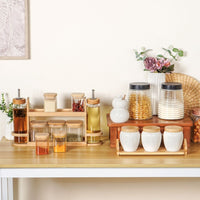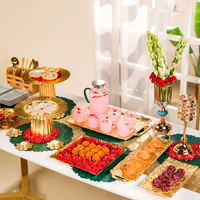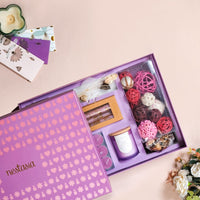“Coffee is a flavour that can be enjoyed at any time of the day” - Coco Chanel
There’s something almost magical about the first sip of coffee in the morning, whether it is brewed hot or cold. Sometimes, its aroma is enough to gently kick-start your day.
Over the years, coffee has evolved just as everything else. Apart from the classic warm coffee mixed with milk, it is now available in various flavours. But with so many options, knowing what type of coffee you’ll need at a particular moment can be hard. Should you go for a creamy latte, a bold espresso, or something cold and refreshing?
Well, we got you covered! In this beginner’s guide, we’ll walk you through the most popular coffee types so that you can brew them or order at a cafe like a pro!
WHERE DOES YOUR COFFEE COME FROM?
Legend has it that an Ethiopian goat herder named Kaldi first discovered coffee in the 9th Century CE. By the 15th Century, it reached Mecca and slowly grew along with the Ottoman Empire. Commercial Mediterranean trade routes brought coffee to Italy in the second half of the 16th century, while the Ottomans introduced coffee to Central and Eastern Europe. The Ottoman Empire established coffeehouses that gradually expanded, and soon, the coffeehouses became a space for free thought and social discussion.
By the middle of the 17th century, it had spread to India and the East Indies. As coffee spread globally, European empires turned it into a major colonial cash crop. By the 18th century, coffee was grown using enslaved labour in regions like Brazil, the Caribbean, and Southeast Asia, linking coffee's rise to slavery and exploitation.
Gradually, it became a working-class staple during industrialization that helped the factory workers stay awake and avoid their natural sleep patterns. Morning beer was replaced with coffee as caffeine took center stage. During World War II, instant coffee gained popularity because it helped give the soldiers a quick morale boost.
During the Cold War era, coffee’s economic significance fueled civil unrest in Latin America. U.S. interventions supported coffee elites, worsening inequality, and contributing to bloody civil wars in Guatemala, El Salvador, and Nicaragua.
In the post-Cold War Era, inspired by Italian café culture, Howard Schultz transformed Starbucks from a Seattle roaster into a global chain, which ultimately revived the coffeehouse culture as a social space, bringing the centuries-old tradition full circle.
Curious about coffee’s journey through time and across continents? Read more about the history of coffee in our blog on the origin and history of coffee.
In today’s world, coffee plantation takes place in many regions, and depending on the regions, the taste of the coffee beans differs. Some major coffee plantation regions are
-
Brazil - The largest coffee producer in the world. Known for chocolatey, nutty, and low-acid coffees.
-
Guatemala - Known for rich, full-bodied coffee with notes of cocoa and spice.
-
Kenya - Produces vibrant, acidic coffees with flavors like blackcurrant, citrus, and berries.
-
Vietnam - One of the largest producers, mostly of Robusta coffee (used in espresso blends and instant coffee).
-
India - Offers mild, spicy, and sometimes woody flavors.
Shop Now
The Most Popular Types of Coffee Explained
1. Espresso
What is it? Espresso is an intensely strong, concentrated form of coffee made by forcing hot water through finely-ground coffee beans under high pressure. It’s known for its bold flavor and rich crema and serves as a base for many popular coffee drinks such as cappuccinos, lattes, and macchiatos. To make espresso, use 18–20g of finely ground dark roast coffee and filtered water. Preheat your machine, tamp the coffee, lock it in the portafilter, and brew for 25-30 seconds to yield 1.5-2 oz. Serve immediately for a bold, fresh shot or as a drink base.
The best time to enjoy an espresso is typically late in the morning, around 9:30 to 11:30 AM, when your natural energy dip begins. It’s also commonly enjoyed after meals, particularly lunch or dinner, as a digestive aid, especially in European culture, where they take espresso shots! However, it is advisable to avoid espresso after 3-4 PM unless you're pulling an all-nighter because the high caffeine content may interfere with your sleep.
2. Americano:
What is it? An Americano is a diluted espresso drink. It is best for people who want a milder coffee experience. To make an Americano, brew 1-2 shots of espresso, pour 4-6 oz of hot water into a cup, then add the espresso over it to preserve the crema. Stir gently and enjoy. The best time to drink an americano is early morning and post-lunch.
3. Macchiato:
A macchiato is a bold espresso-based drink with a small amount of milk added, just to soften the intensity while keeping the espresso flavor front and center. It's perfect for those who enjoy strong coffee with a touch of creaminess. To make the perfect macchiato, brew 1 shot of espresso, top with 1-2 teaspoons of steamed milk or foam, and serve immediately in your favourite coffee mug without stirring. It is perfect for afternoon pick-me-ups.
4. Cappuccino:
A cappuccino is a classic Italian coffee drink made with equal parts espresso, steamed milk, and milk foam. It’s rich, creamy, and well-balanced, perfect for those who want bold coffee flavor with a velvety texture. All you need to do is brew a shot of espresso, then add ⅓ cup of steamed milk and ⅓ cup of milk foam on top. Dust with cocoa or cinnamon if desired. It is traditionally a morning drink, and is best enjoyed with breakfast or as a leisurely mid-morning treat.
5. Latte:
The word latte means "milk" in Italian, and it's typically made with espresso and steamed milk, topped with a small amount of foam. It is the same as a cappuccino, but it is more milky and creamy with less coffee content. Therefore, it is best for any time of the day!
6. Iced Coffee:
Iced coffees are a refreshing, cold version of regular coffee, perfect for warmer weather. It’s made by brewing hot coffee and then cooling it down, typically by adding ice. It can also be served with ice-creams and different flavours like vanilla, hazelnut, and even banana! To know more about cold coffee, read our blog on 11 cold coffee recipes.
How To Brew Coffee Like A Pro
Brewing coffee like a pro doesn’t require fancy equipment or a barista degree - just the right tools and technique! Here’s how to master the basics.
Espresso Machine: Espresso is the foundation for many coffee drinks. Use fresh, high-quality beans and grind them finely. Fill the portafilter with the grounds, tamp them down firmly, and lock it into the machine. Brew for 25-30 seconds. A shot of espresso should have a rich, golden crema on top.
French Press: Ideal for a rich, full-bodied cup. Use coarser ground coffee and water just off the boil (around 200°F). Add 1:15 coffee-to-water ratio, stir, then steep for 4 minutes. Press slowly and evenly. The result is smooth and robust.
Pour-Over: Perfect for precision and clarity. Use a coffee filter in a pour-over dripper (like a V60), and pour hot water in slow, circular motions over medium-ground coffee. Pour in stages, allowing the water to bloom first, then gradually add more. The process takes about 3 minutes, producing a clean, flavorful cup.
Easy Methods for Beginners:
Drip Coffee Maker: The simplest option. Use the right grind size and clean water, and you'll get a consistently good brew.
AeroPress: A great beginner tool. Use finely ground coffee, steep for about 30 seconds, then press for a smooth, espresso-like shot.
No matter which method you choose, fresh beans and the right technique are key to brewing great coffee!
Want to step up your brewing game? Learn the secrets of brewing coffee like a pro barista.
Hope this blog has helped you learn about the fascinating history of coffee, its various types, and equipped you with the knowledge to brew them like a pro or confidently order at your favorite café.
Enjoy your coffee journey.

























